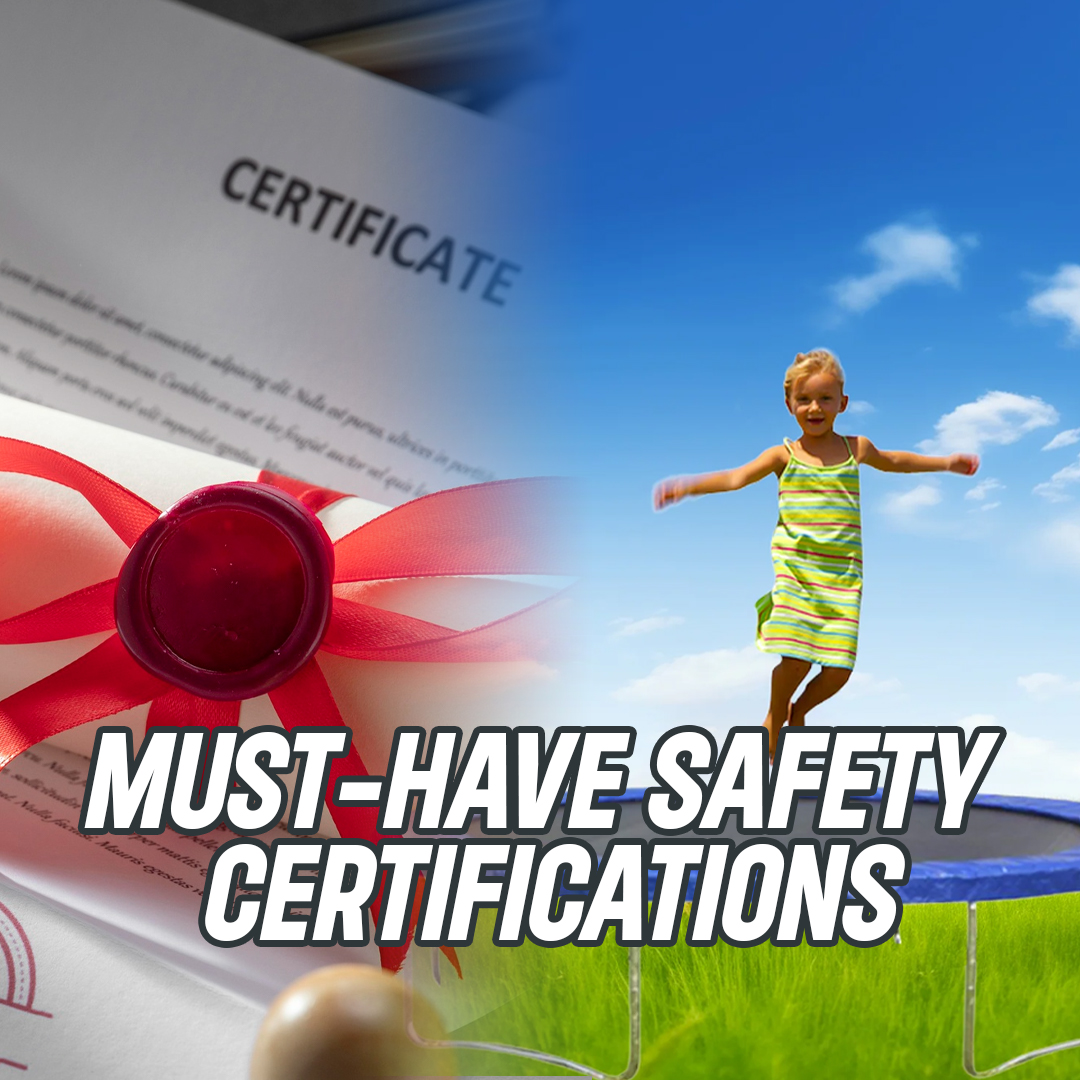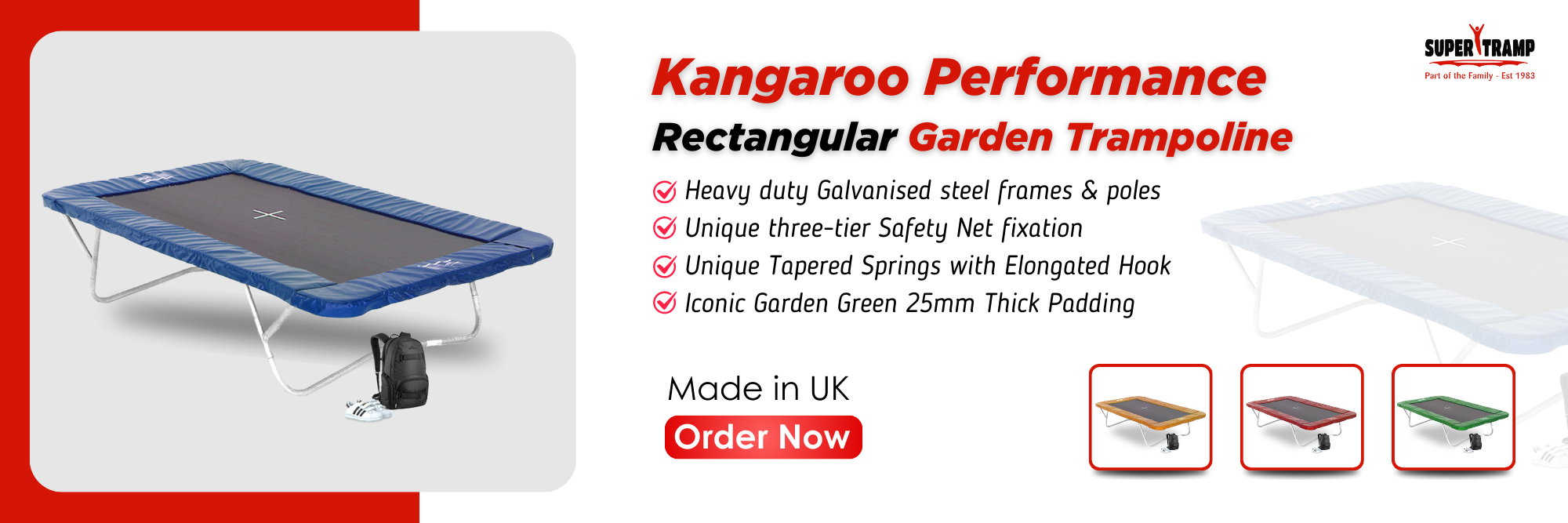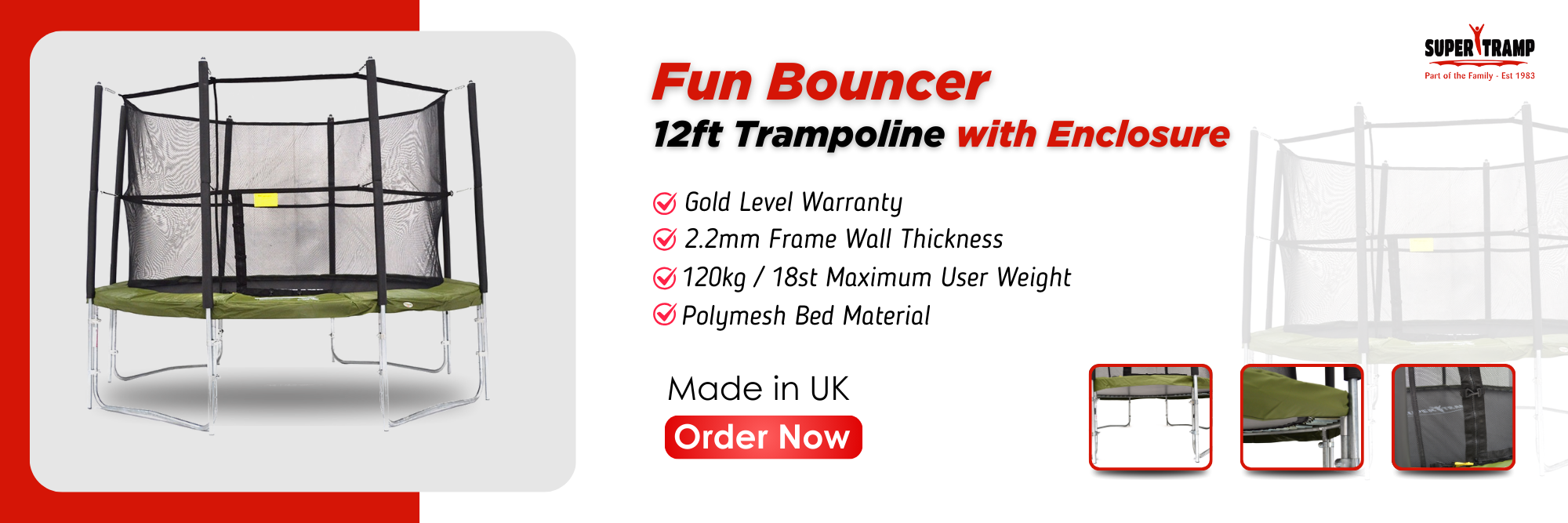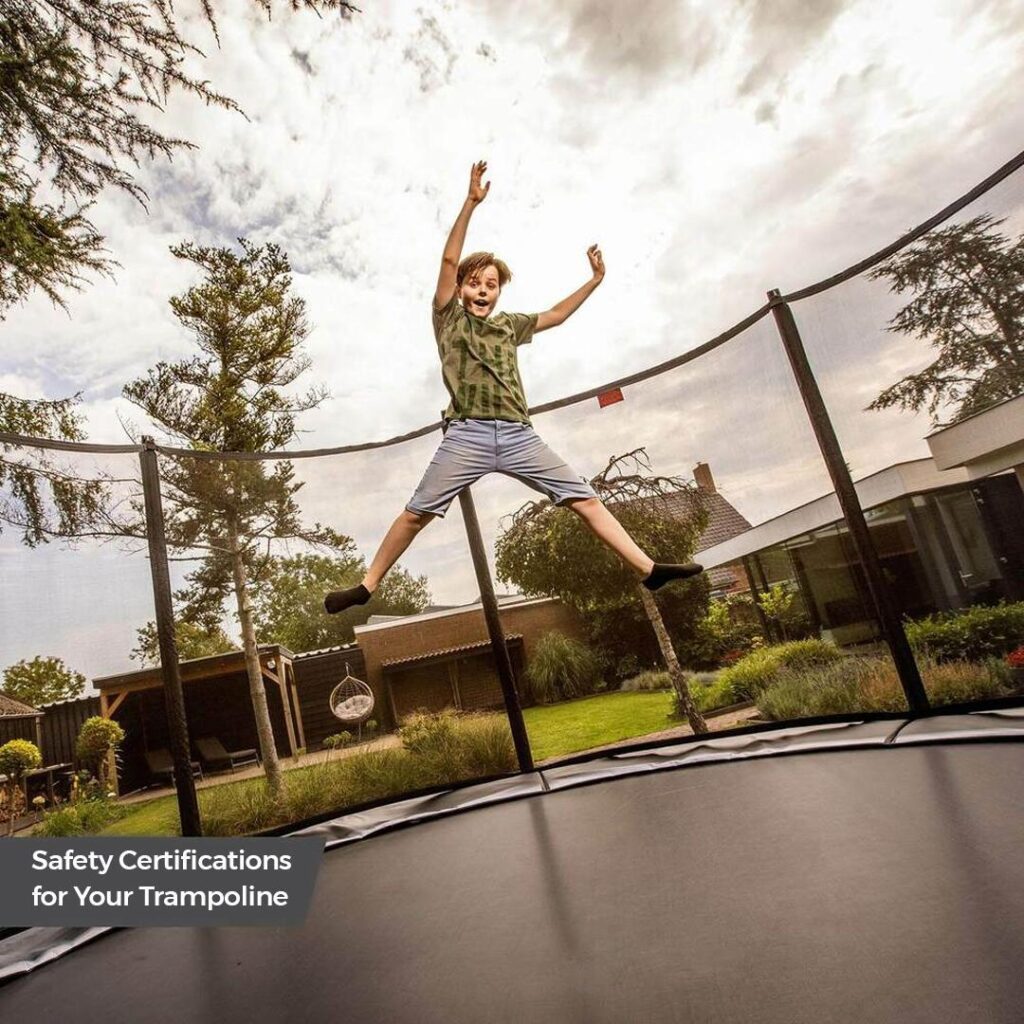
Trampolines are popular for both recreation and exercise, offering users of all ages significant health benefits. However, the enjoyment of trampolines comes with potential risks, making safety a critical concern. In the UK, rigorous safety certifications and regulations such as BS EN 71-14:2018 for domestic trampolines and EN 1176 for playground trampolines ensure that these products meet strict standards for safety and performance. This blog explores the importance of these safety certifications and provides an overview of the safety regulations governing trampolines in the UK, highlighting how they help protect users and enhance the quality of trampoline products on the market.
Table of Contents
ToggleThe UK’s Regulatory Bodies for Trampoline Safety
Ensuring the safety and quality of trampolines within the UK involves several regulatory bodies, each playing critical roles in standardization and safety enforcement. Among these, the Trampoline and Play Equipment and The Royal Society for the Prevention of Accidents (RoSPA) are pivotal.
The Trampoline Safety
1. Role and responsibilities It’s focused on ensuring the safety and quality of trampoline and play equipment in the UK. It sets industry standards and guidelines that manufacturers and distributors must follow to guarantee that their products are safe for public use. The association conducts regular audits and inspections to ensure compliance with these standards.
2. Benefits of membership and certification Membership provides manufacturers and retailers with a mark of trust, indicating that their products meet stringent safety standards.
Certification help companies gain a competitive edge in the market, build consumer confidence, and potentially reduce liability in the event of accidents. Members also benefit from access to the latest industry research, safety training, and best practices.
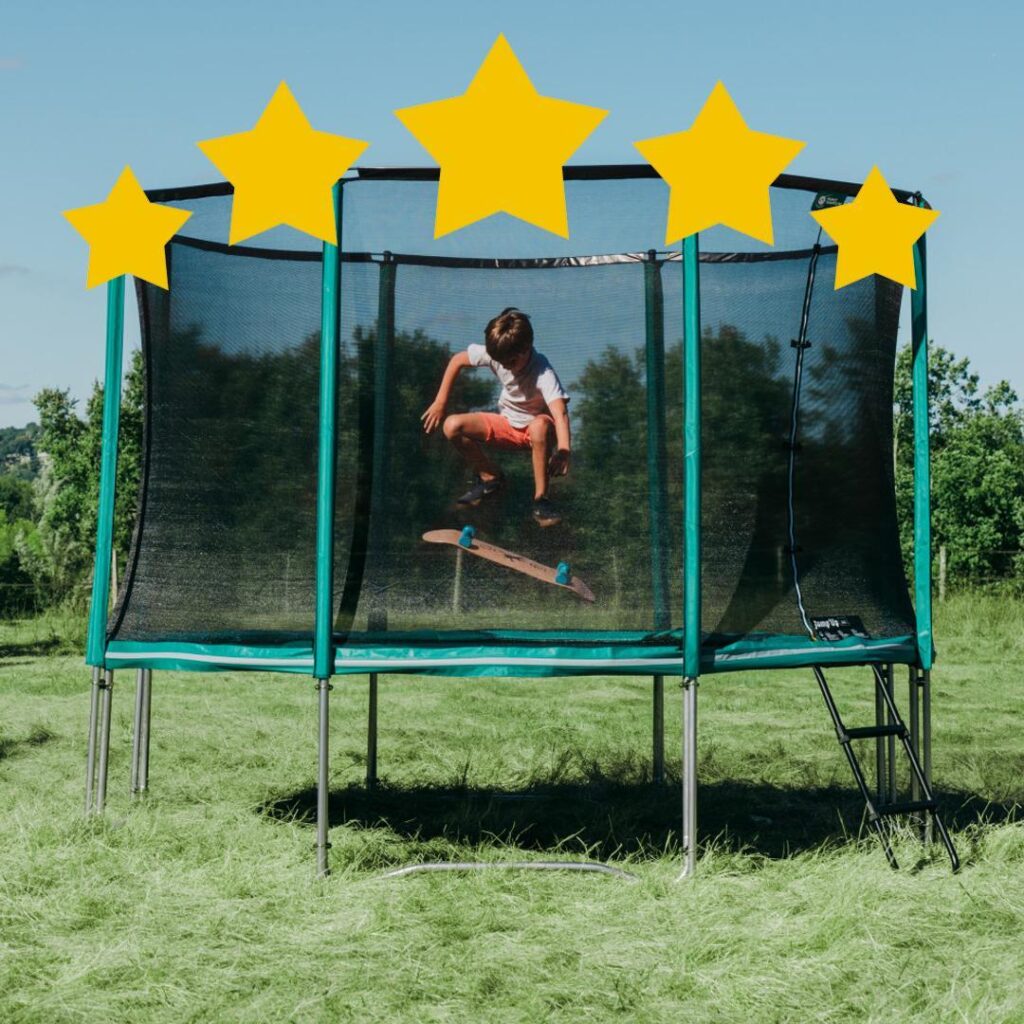
The Royal Society for the Prevention of Accidents (RoSPA)
1. Role and responsibilities RoSPA is a widely recognized organization dedicated to preventing accidents across the UK, including those involving trampolines. It provides expert advice and information to manufacturers, schools, leisure centers, and the public on how to prevent accidents and promote safety. RoSPA does not certify products directly but influences safety standards through its advocacy and educational programs.
2. Benefits of RoSPA certification Although RoSPA itself does not certify trampolines, its endorsement of safety practices and training programs is highly regarded. Products that adhere to RoSPA’s safety recommendations are often viewed as preferable by consumers. Benefits of aligning with RoSPA’s standards include enhanced safety credentials, improved public perception of product safety, and access to comprehensive accident prevention resources.
These organizations play integral roles in the framework of trampoline safety within the UK, guiding both legislative measures and public perception toward safer recreational environments.
The UK’s Safety Standards for Trampolines
Trampoline safety in the UK is governed by robust standards, which are set and upheld by two key organizations: the British Standards Institution (BSI) and the European Committee for Standardization (CEN). These bodies ensure that trampolines sold and used in the UK meet rigorous safety criteria to protect users.
The British Standards Institution (BSI)
- Who are they? The BSI is the UK’s national standards body responsible for creating and maintaining standards for a wide array of products, including trampolines.
- Why does it matter? They collaborate with manufacturers, consumers, and regulatory bodies to establish standards that promote safety, reliability, and efficiency.
- Key Standard: BS EN 71-14:2018
- What does it cover? This standard addresses safety requirements for materials, design, and construction of domestic trampolines. It also includes specific performance criteria and test methods.
- Why comply? Adhering to these standards helps manufacturers ensure that their trampolines minimize the risk of accidents, protecting users and boosting consumer confidence in their products.

The European Committee for Standardization (CEN)
- Who are they? CEN is a pivotal non-profit organization that develops standards for a broad range of products and services across Europe.
- Why does it matter? By harmonizing safety standards across Europe, CEN ensures a high level of safety and supports the free movement of goods within the market.
- Key Standard: EN 1176 (for playground equipment, including public-use trampolines)
- What does it cover? It provides comprehensive guidelines on general safety, installation, inspection, and maintenance of playground trampolines.
- Why comply? Compliance with EN 1176 ensures that trampolines used in public settings meet higher safety standards due to increased wear and potential risks, thereby ensuring public safety and compliance with European guidelines.
The UK’s Safety Certification Process for Trampolines
The process of certifying trampolines in the UK is rigorous and detailed, designed to ensure that all products meet the highest standards of safety before they reach consumers. This certification process involves a series of tests and inspections that manufacturers and retailers must navigate successfully.
The Certification Process for Trampoline Manufacturers and Retailers
➤ EN71 Part 14 Certification
- Purpose: This certification ensures that trampolines intended for domestic use meet specific safety standards related to materials, construction, and design.
- Process: Manufacturers must submit their products for testing at an accredited laboratory to verify that they comply with the requirements outlined in EN71 Part 14.
➤ CE Testing
- Purpose: CE marking certifies that a product has met EU health, safety, and environmental protection standards, which is essential for products sold within the European Economic Area.
- Process: The manufacturer must ensure that their garden trampoline complies with relevant EU directives and regulations, followed by self-assessment or third-party verification.
➤ GS TUV Certification
- Purpose: This voluntary certification indicates that a product has been tested for safety by TUV Rheinland, a globally recognized testing body.
- Process: The product undergoes testing according to predetermined safety criteria. Successful completion results in a GS (Geprüfte Sicherheit) mark, indicating high product safety.
The Inspection Process for Trampolines
➤ Inspection Criteria
- Components: Inspections evaluate the trampoline’s structural integrity, stability, and safety features like padding and enclosures.
- Safety Compliance: Inspectors check for adherence to the latest safety standards and regulations.
➤ Inspection Frequency
- Initial Inspection: Before hitting the market, each model undergoes a detailed inspection.
- Routine Inspections: Regular inspections occur during production and randomly from the retail market to ensure ongoing compliance.
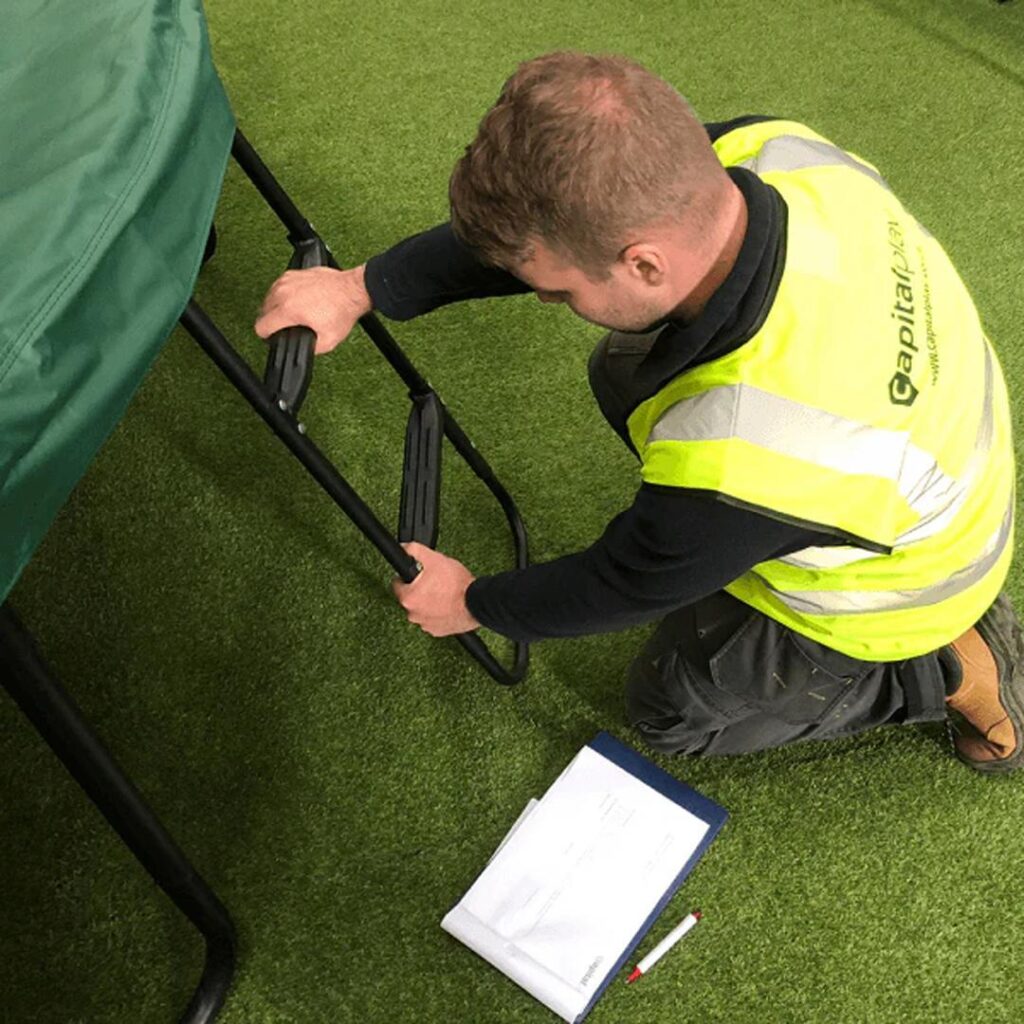
The Ongoing Safety Certification Requirements
➤ Regular Audits and Inspections
- Purpose: To continuously ensure that the manufacturing processes and the final products maintain the required safety standards.
- Process: Manufacturers must allow scheduled and unscheduled audits by certifying bodies to retain their certifications.
➤ Compliance with Updated Safety Standards
- Adaptation: Manufacturers are required to stay updated with changes in safety standards and regulations.
- Implementation: Compliance involves modifying product designs and manufacturing processes to align with new or revised safety standards.
This comprehensive certification and inspection framework ensures that trampolines sold in the UK are safe for users, thereby reducing the risk of injuries and enhancing consumer trust in these products.
Benefits of Safety Certifications for Trampoline Owners
Safety certifications for trampolines are not merely formalities; they are crucial elements that benefit bespoke trampoline owners in multiple ways. From enhancing user safety to complying with legal requirements and protecting a brand’s reputation, these certifications serve as a testament to a company’s commitment to excellence and safety.
Ensuring the Safety of Trampoline Users
- Direct Impact: Safety certifications ensure that trampolines meet rigorous safety standards that minimize the risk of accidents and injuries. Certification processes test everything from structural integrity and stability to the safety of materials used.
- User Confidence: When users see that a trampoline is certified, they feel more secure about using the product. This trust is crucial for consumer satisfaction and product success.

Compliance with Local Regulations and Insurance Requirements
- Regulatory Compliance: Many regions have specific safety regulations that trampolines must meet to be legally sold and used. Obtaining necessary safety certifications ensures that these products comply with such legal standards, preventing legal issues and potential fines.
- Insurance Benefits: Often, insurance companies require safety certifications before agreeing to cover a product. In the case of trampolines, being certified can lower insurance premiums and make it easier to obtain liability insurance, providing financial protection against potential claims.
Protecting Your Brand and Reputation
- Brand Integrity: Safety certifications are a powerful marketing tool that can elevate a brand above competitors. They signify quality and reliability, appealing to safety-conscious consumers.
- Reputation Management: Consistently meeting safety standards and holding valid certifications can enhance a brand’s reputation, making it synonymous with safety and quality. This is particularly valuable in industries where safety is a major concern, as it can lead to increased customer loyalty and higher sales.
How to Choose a Safe Trampoline in the UK
Selecting a safe trampoline is essential to ensure the well-being of users and to make the most of this fun and beneficial activity. When purchasing a trampoline in the UK, it is important to consider several critical factors that contribute to its safety. Here is a guide to help you choose a trampoline that meets all necessary safety standards and regulations:
Checking for Safety Certifications and Compliance with UK Regulations
- Certifications to Look For: Ensure the In-ground or Above ground trampoline you choose is certified under the BS EN 71-14:2018 for domestic trampolines, or other relevant standards like GS TUV for added reassurance.
- CE Marking: Check that the product has the CE mark, indicating compliance with European Union safety standards, which include the UK.
- Vendor Reliability: Purchase trampolines from reputable vendors who provide clear information about the product’s compliance and safety features.
Choosing Pads that Meet or Exceed Safety Standards
- Material Quality: Look for pads made from high-density, shock-absorbing foam that can effectively cushion falls and prevent injuries.
- Coverage: Ensure the protective padding covers all springs, hooks, and the outer frame completely to eliminate gaps where users might get injured.
- Durability: Select pads that are weather-resistant and UV-protected to maintain their protective qualities over time.
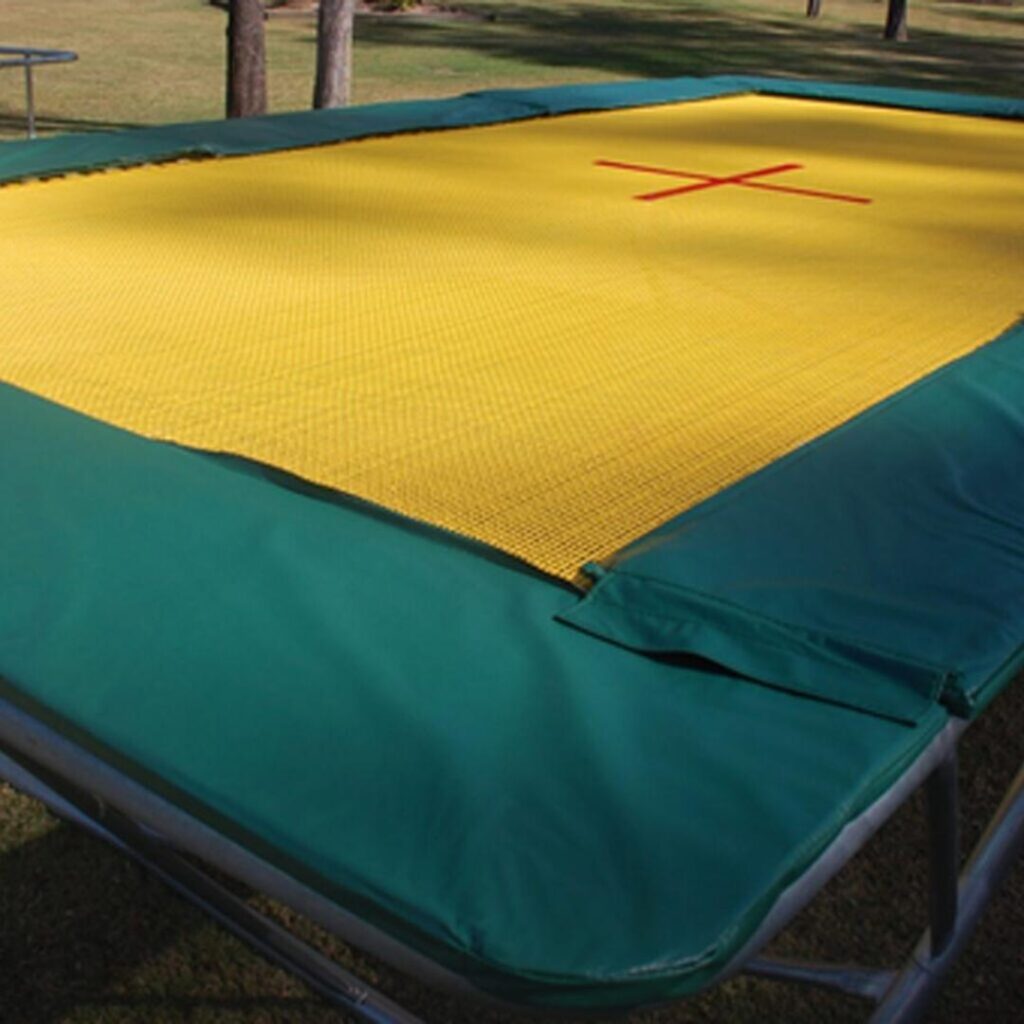
Ensuring the Trampoline is Designed with Safety in Mind
- Sturdy Frame Construction: Choose trampolines with a robust frame made from galvanized steel, which offers durability and stability.
- Springless Designs: Consider springless models, which use flexible composite rods underneath the jumping surface instead of conventional springs, reducing injury risks.
- Leg Design: Opt for trampolines with W-shaped legs or other designs that provide a stable base and minimize the risk of tipping over.
Choosing a High-Quality Trampoline Net with Safety Certification
- Netting Material: Ensure the safety net is made from strong, durable materials that can withstand impact without tearing.
- Height of the Net: The net should be tall enough to prevent users, especially children, from falling over it.
- Secure Attachments: Check that the net attaches securely to the trampoline, with no gaps between the net and the edges of the jumping surface.
- Entrance Closure: The entrance to the trampoline should have a secure, easy-to-use closure system to prevent accidental openings.
By taking these factors into account, you can make an informed decision when purchasing a trampoline, ensuring it provides not only fun and exercise but also maximum safety for all users.
Conclusion
Safety certifications for trampolines in the UK are crucial for ensuring the products meet stringent safety standards, thereby protecting users from potential injuries. Trampoline owners play a vital role in maintaining safety by regularly checking for and adhering to these certifications and ensuring their equipment complies with the latest safety standards. Staying informed and up-to-date with safety regulations and certifications not only helps in maintaining high safety levels but also enhances consumer trust and confidence in trampoline products. Ultimately, these practices contribute to a safer environment for everyone enjoying this fun and active pastime.

